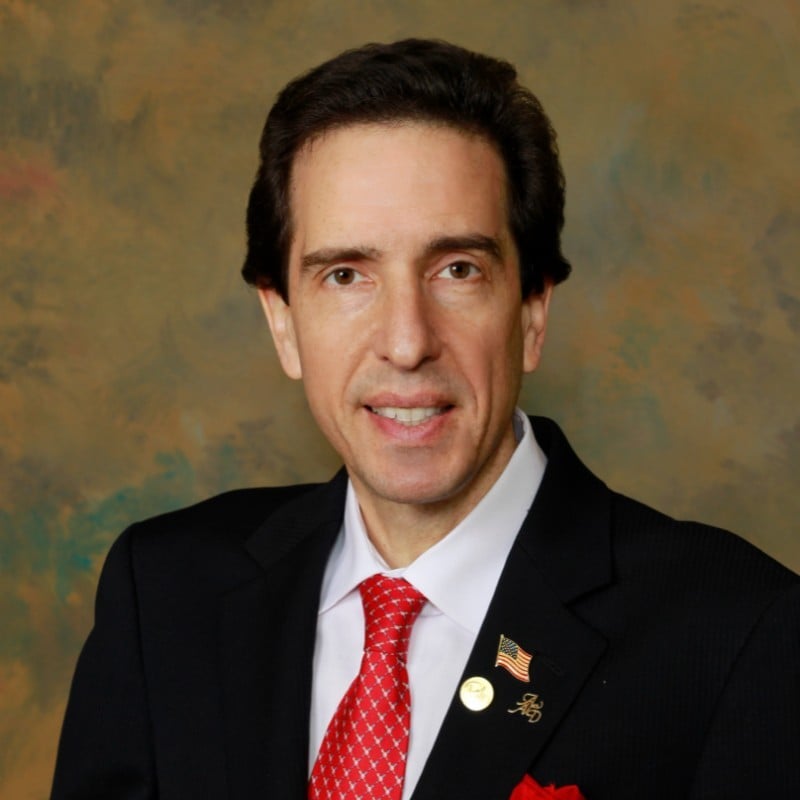“Dental Cripples.” It may be politically incorrect, but in my specialty program 30 years ago, this was the way we were taught to think about people with full dentures. Implants were relatively new, and the start of research on “All-on-X” or simplified implant-supported teeth was a year away.
Dentists would do just about anything to prevent people from losing those last few teeth, including performing endodontic work (root canals). Custom cast posts and cores with overdentures were complicated and expensive, but for most people, they were better than nothing. The procedures led to the development of different types of root attachments, including the type with exchangeable elastic inserts, which became the most popular. Overlooked were the once popular, high-end magnetic attachments where, if you could save just a couple of teeth or place just a few implants, you could place magnets and hold a denture with incredible strength. Research at the time showed patients preferred magnetic attachments to elastic insert attachments, and dentists preferred them because magnetic attachments did not have to be changed yearly and would last 20 years with almost no maintenance! After years of being forced to use elastic attachments, it once again is possible to have magnetically attached teeth. Make sure to ask your dentist if this is a good solution for you.
Teeth vs. Implants
The original magnet attachments were designed just for teeth and were great for the short-term (five to 10 years), but they were susceptible to corrosion (rust), which could cause them to fall apart and stain dentures. Eventually, micro-welding technology was developed along with titanium housings that completely eliminated corrosion and allowed dental magnets to truly last long-term. Magnets could be either made into “custom cast post and cores” or “prefabricated posts”; however, they could only be cemented into root canal-treated teeth.
Today’s modern magnetic overdenture attachments are designed for teeth and many popular implant systems. In other words, it’s now possible to save two or more relatively strong teeth and use magnets to hold dentures in place or place at least two implants that hold magnets and support partial or full dentures.
If possible, dentists believe it is important to save natural teeth. If no teeth can be saved, magnetic overdentures can be made by placing implants. They take two (2) to six (6) months to heal, perhaps longer if extra bone grafts are needed.
Also, there’s a reason people may lose teeth—they may not understand how to clean and maintain their natural teeth or have health issues that cause tooth decay or gum disease. Root canal treatment and magnetic posts won’t stop tooth decay or gum disease from returning. This may cause future complications. On the other hand, implants will not decay and may be less prone to bone loss from gum disease than natural teeth. Also, screwing a magnet attachment into an implant is less complicated than having to cement it into a natural tooth.
Using magnetic teeth
Magnetic “click-on” teeth can be either full dentures (overdentures) or partial dentures. Magnets can hold a partial denture in place without hooks or clasps, while keeping remaining healthy teeth, either filling in the patient’s front smiling teeth or replacing their back chewing teeth. For a full overdenture, the magnets are covered by and hold a full denture in place. The denture is made following traditional guidelines, as if there were no implants. In fact, many dentists will ask their patients to wear a full overdenture for a week before adding the attachments to ensure proper fit. Once the removable teeth are completed, the magnetic posts are placed into the implants, and matching magnets are attached into the denture, following classic chairside attachment protocols. The patient is then shown how to place and remove their new click-on teeth.
While magnetic implant attachment or “click-on” smiles are not a new technique, the ability to secure teeth in the mouth with just two implants and modern, superior magnets can be a wonderful service for people who aren’t candidates for traditional implant treatment. The ability of dental implant experts, like AAID implant dentists, to make attractive, tight-fitting teeth for people who otherwise wouldn’t be able to get them could help people with missing teeth eat better, more nutritious food, keeping them in better health longer.
 Dr. Michael Teitelbaum graduated from the University of Pennsylvania School of Dental Medicine in 1989, attended a one-year General Practice Residency program at Lutheran Medical Center, and a two-year prosthodontic specialty program at the New York University College of Dentistry. He taught clinical prosthodontics for eight years and has worked in private practice in New York since 1990. In 2001, he achieved Fellow status with the Academy of General Dentistry (AGD), in 2017 he was awarded the title of "Master" of the Academy of General Dentistry and also was inducted into the American College of Dentists. Dr. Teitelbaum is the founding vice president of the Empire State Academy of Cosmetic Dentistry, first president of the Greater New York Academy of Cosmetic Dentistry, and a director of the Westchester Academy of Restorative Dentistry. In addition, he was an evaluator for CR for 18 years, is an evaluator for Dental Product Shopper, and is a lifetime member of the International Magicians Society. He is the Director of Westchester, NY’s only DentistSpa, has lectured across the country and is the author of numerous professional articles. For more information, call (914) 941-2000, email Dr@DentistSpa.com or visit www.DentistSpa.com
Dr. Michael Teitelbaum graduated from the University of Pennsylvania School of Dental Medicine in 1989, attended a one-year General Practice Residency program at Lutheran Medical Center, and a two-year prosthodontic specialty program at the New York University College of Dentistry. He taught clinical prosthodontics for eight years and has worked in private practice in New York since 1990. In 2001, he achieved Fellow status with the Academy of General Dentistry (AGD), in 2017 he was awarded the title of "Master" of the Academy of General Dentistry and also was inducted into the American College of Dentists. Dr. Teitelbaum is the founding vice president of the Empire State Academy of Cosmetic Dentistry, first president of the Greater New York Academy of Cosmetic Dentistry, and a director of the Westchester Academy of Restorative Dentistry. In addition, he was an evaluator for CR for 18 years, is an evaluator for Dental Product Shopper, and is a lifetime member of the International Magicians Society. He is the Director of Westchester, NY’s only DentistSpa, has lectured across the country and is the author of numerous professional articles. For more information, call (914) 941-2000, email Dr@DentistSpa.com or visit www.DentistSpa.com





